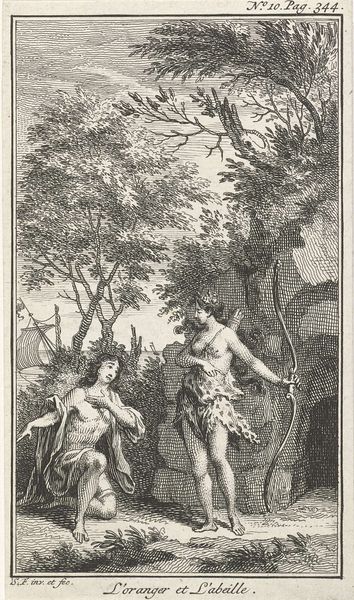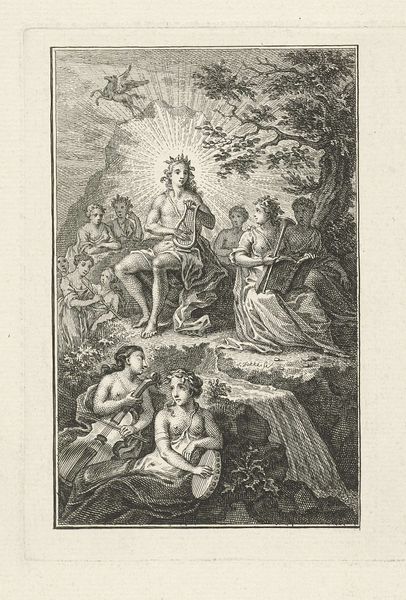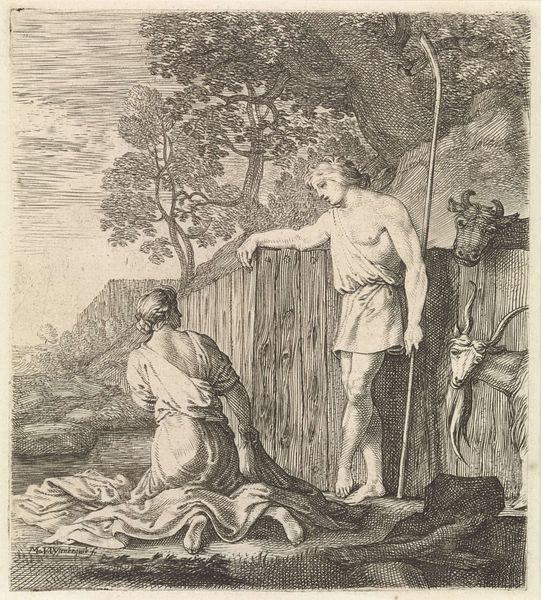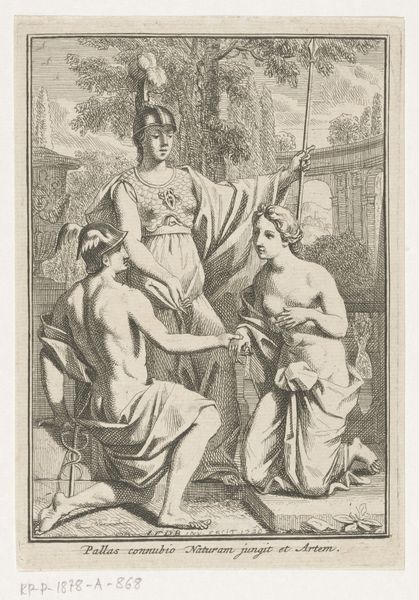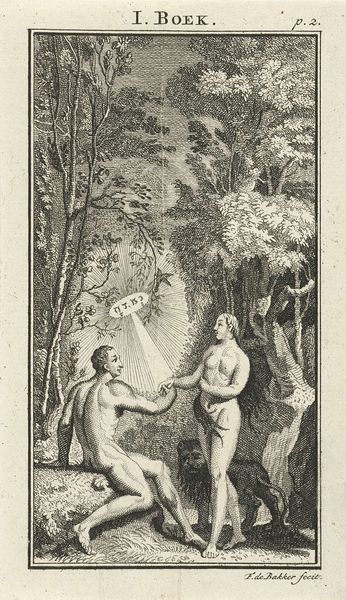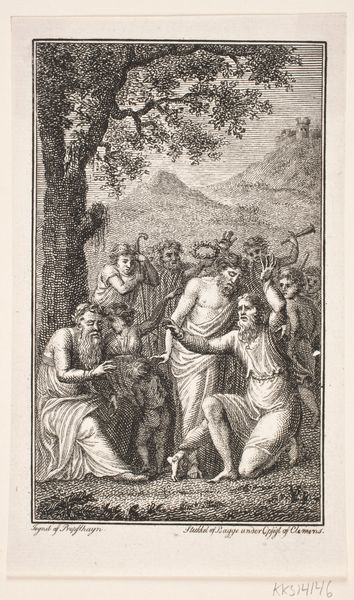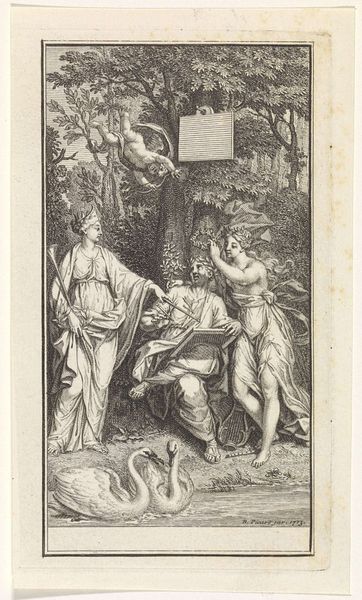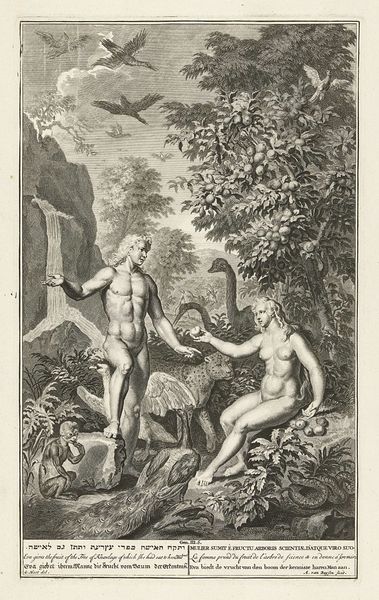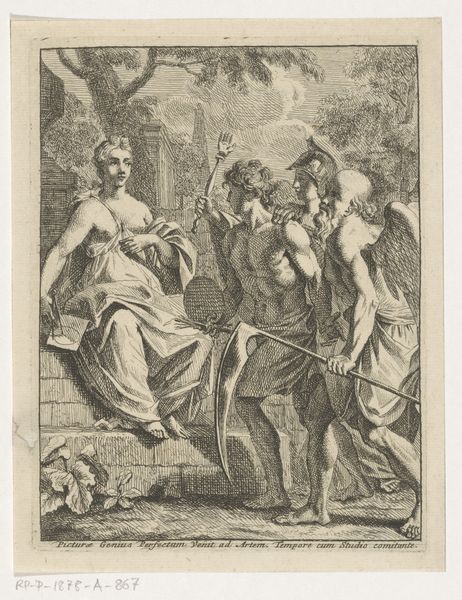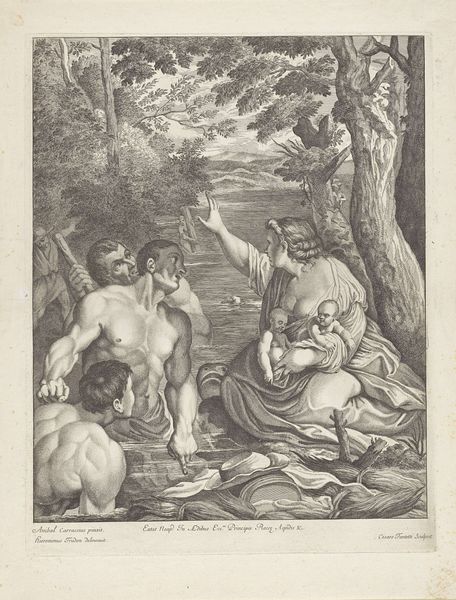
print, engraving
#
baroque
# print
#
pen illustration
#
old engraving style
#
landscape
#
figuration
#
history-painting
#
engraving
Dimensions: height 148 mm, width 88 mm
Copyright: Rijks Museum: Open Domain
Curator: I'm struck by the scene's stillness despite all the activity; it feels as though the world is holding its breath. Editor: Indeed. What we're looking at here is an engraving created sometime between 1712 and 1744 by Wouter Jongman. It's titled "Nausicaä en haar dienstmaagden wassen kleding," which translates to "Nausicaä and her maids washing clothes". Curator: "Washing clothes" seems like a mundane description for this scene; it feels loaded with mythic potential. We see figures emerging from a background suggestive of classical ruins or some idealized cityscape, their garments draping and revealing the body, caught somewhere between action and repose. Who exactly are we looking at? Editor: Well, the inscription below clarifies things. It references Minerva and Nausicaä from Homer’s Odyssey, indicating that Minerva, or Athena, is instructing Nausicaä to wash clothes by the river. You can see in the image a man holding some foliage; most likely Odysseus when she meets him at the river bank after she has washed the clothes. This connects to themes of divine intervention and purification rituals embedded within domestic labor. How these concepts were re-interpreted is evident by a very common Dutch subject—genre painting—becoming a history piece. Curator: Yes! The act of cleansing isn't just practical; it's symbolic. Water represents not only cleanliness, but perhaps rebirth and renewal. Notice how the posture and arrangement echo classical friezes, a memory of ancient Greece in the age of Enlightenment, speaking of the cultural undercurrent that connects eras and infuses everyday tasks with a sense of destiny. The choice of printmaking further underscores that accessibility – disseminating a message beyond elite circles, offering everyone a piece of that historical reflection. Editor: And the landscape, though idealized, roots it within a tangible world, and the sharp contrast creates an almost dramatic intensity which reflects the cultural fascination of the 18th century with antiquity and how such a scene was designed to communicate societal roles. Curator: Precisely; these images hold profound historical narratives. Seeing these historical images and how we process it years later lets the viewer feel more embedded in cultural history, something familiar through the passage of time. Editor: An intriguing snapshot of how classical tales were appropriated to reflect social ideals. I feel I learned a new interpretation here today.
Comments
No comments
Be the first to comment and join the conversation on the ultimate creative platform.
